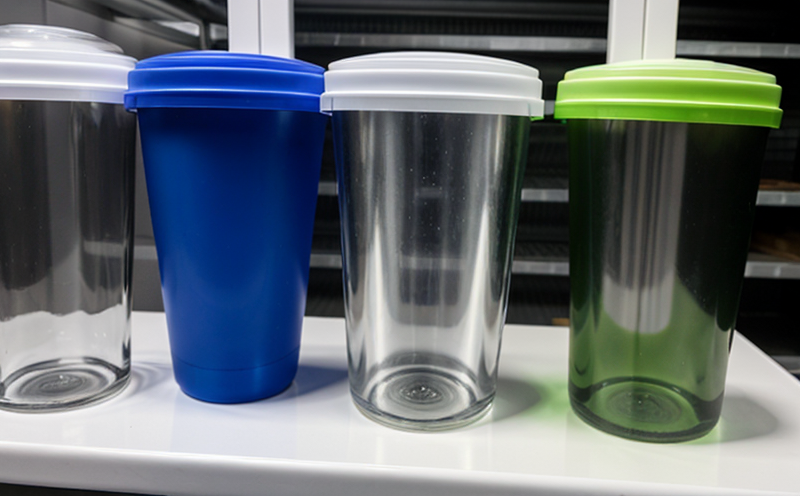ISO 1103-1 Glass Annealing Point Measurement
The glass annealing point is a critical parameter in quality assurance and process control within the packaging industry. It represents the temperature at which a particular type of glass begins to soften due to thermal treatment, which directly affects its durability and performance. Understanding this characteristic ensures that glass containers meet stringent quality standards for packaging applications.
ISO 1103-1 specifies the method for measuring the annealing point by determining the temperature at which a glass sample starts to lose its shape under the influence of heat. This test is essential in various stages of product development and production, from raw material selection to final quality assurance checks. Accurate measurement of this property helps manufacturers avoid defects such as excessive deformation or breakage during handling.
In the context of packaging testing, understanding the annealing point ensures that glass containers can withstand the stresses encountered throughout their lifecycle—from manufacturing to end-user usage. This knowledge is vital for optimizing production processes and ensuring product reliability. By adhering to international standards like ISO 1103-1, companies can demonstrate compliance with regulatory requirements while also enhancing their reputation through superior product performance.
The measurement process involves heating a small glass sample in an oven until it reaches its annealing point, defined as the temperature at which the material no longer deforms under the influence of heat. This is typically identified by observing changes in volume or shape that indicate softening. The precise temperature can vary based on factors like composition and thermal history but must be consistent within a batch for quality assurance.
For accurate measurements, specimens should represent typical production batches. Preparing these samples correctly ensures reliable results that reflect real-world conditions. Once prepared, they are subjected to controlled heating in an oven until the desired temperature is reached. At this point, observations such as visual changes or physical properties can confirm the annealing point.
While ISO 1103-1 provides a standardized approach, it’s important to note that different types of glass may have varying characteristics due to differences in chemical composition and manufacturing processes. Therefore, tailoring tests according to specific materials is crucial for obtaining meaningful data.
The results from this test are vital not only during development phases but also throughout the product lifecycle. They help ensure consistent quality across batches, reduce waste by preventing overprocessing or under-processing of raw materials, and improve overall efficiency in production lines. Furthermore, compliance with international standards like ISO 1103-1 adds credibility to products and supports global trade by meeting regulatory requirements.
Understanding the annealing point is particularly significant for glass packaging manufacturers who rely heavily on this parameter to ensure product integrity. Accurate measurement allows them to optimize production processes while maintaining high standards of quality control, ultimately leading to more reliable end-products.
In summary, measuring the annealing point according to ISO 1103-1 is essential for ensuring consistent and reliable glass packaging performance. By following this standard methodology, manufacturers can enhance product quality, improve efficiency in production processes, and comply with international regulations.
Industry Applications
Beverage Industry: Ensuring that glass bottles retain their shape under heat to prevent breakage during bottling or transportation.
Pharmaceutical Packaging: Guaranteeing container integrity for temperature-sensitive medications by ensuring they don’t deform at expected storage temperatures.
Consumer Goods: Maintaining the structural integrity of glass containers used in household products like detergents and cleaning agents.
Food & Beverage Manufacturing: Providing assurance that packaging materials remain stable under various environmental conditions, from refrigeration to room temperature.
Environmental and Sustainability Contributions
The measurement of the annealing point plays a crucial role in promoting sustainability within the glass packaging sector. By ensuring that glass containers maintain their structural integrity throughout their lifecycle, manufacturers can minimize waste by preventing premature failure due to heat exposure.
This practice contributes significantly to reducing material usage and energy consumption associated with reprocessing or replacing defective products. Additionally, adhering to international standards like ISO 1103-1 helps promote transparency in supply chains, allowing consumers to make informed choices about eco-friendly packaging options.
Furthermore, accurate measurement of annealing points supports the development of more efficient production processes and better-designed products that meet both performance requirements and environmental considerations. This approach fosters innovation while contributing positively towards global sustainability goals.
Use Cases and Application Examples
The application of ISO 1103-1 in glass annealing point measurement extends beyond just laboratory settings; it has practical implications across multiple industries. Here are some specific use cases:
Beverage Industry: Ensuring that glass bottles retain their shape under heat to prevent breakage during bottling or transportation.
Pharmaceutical Packaging: Guaranteeing container integrity for temperature-sensitive medications by ensuring they don’t deform at expected storage temperatures.
Consumer Goods: Maintaining the structural integrity of glass containers used in household products like detergents and cleaning agents.
Food & Beverage Manufacturing: Providing assurance that packaging materials remain stable under various environmental conditions, from refrigeration to room temperature.





